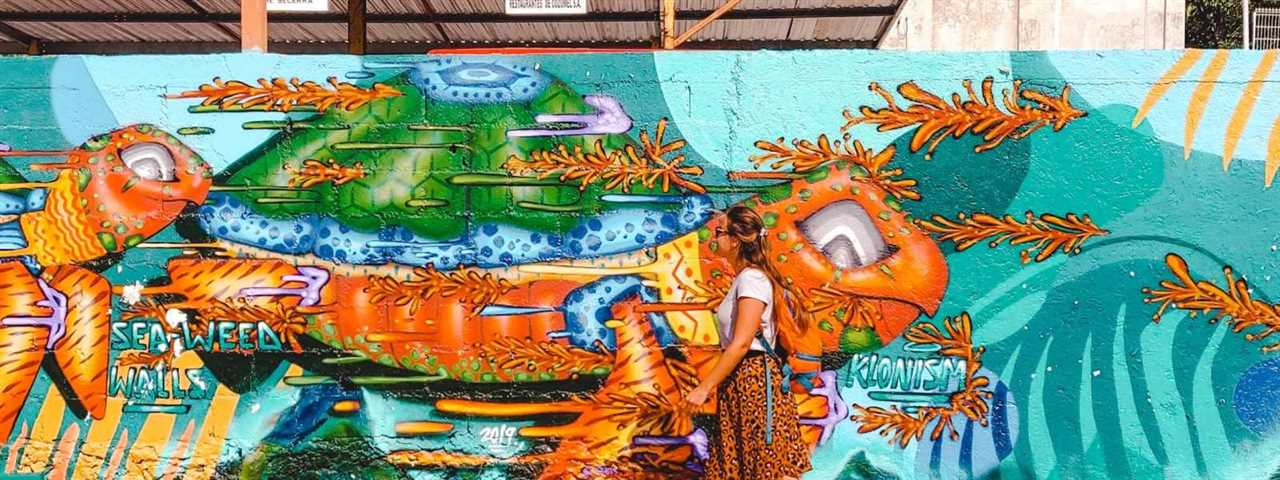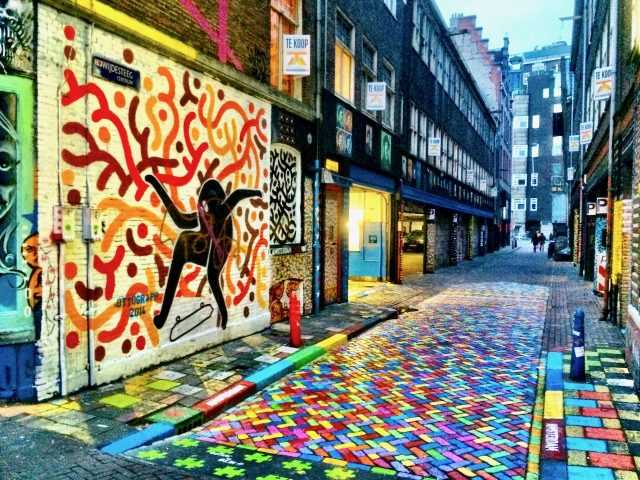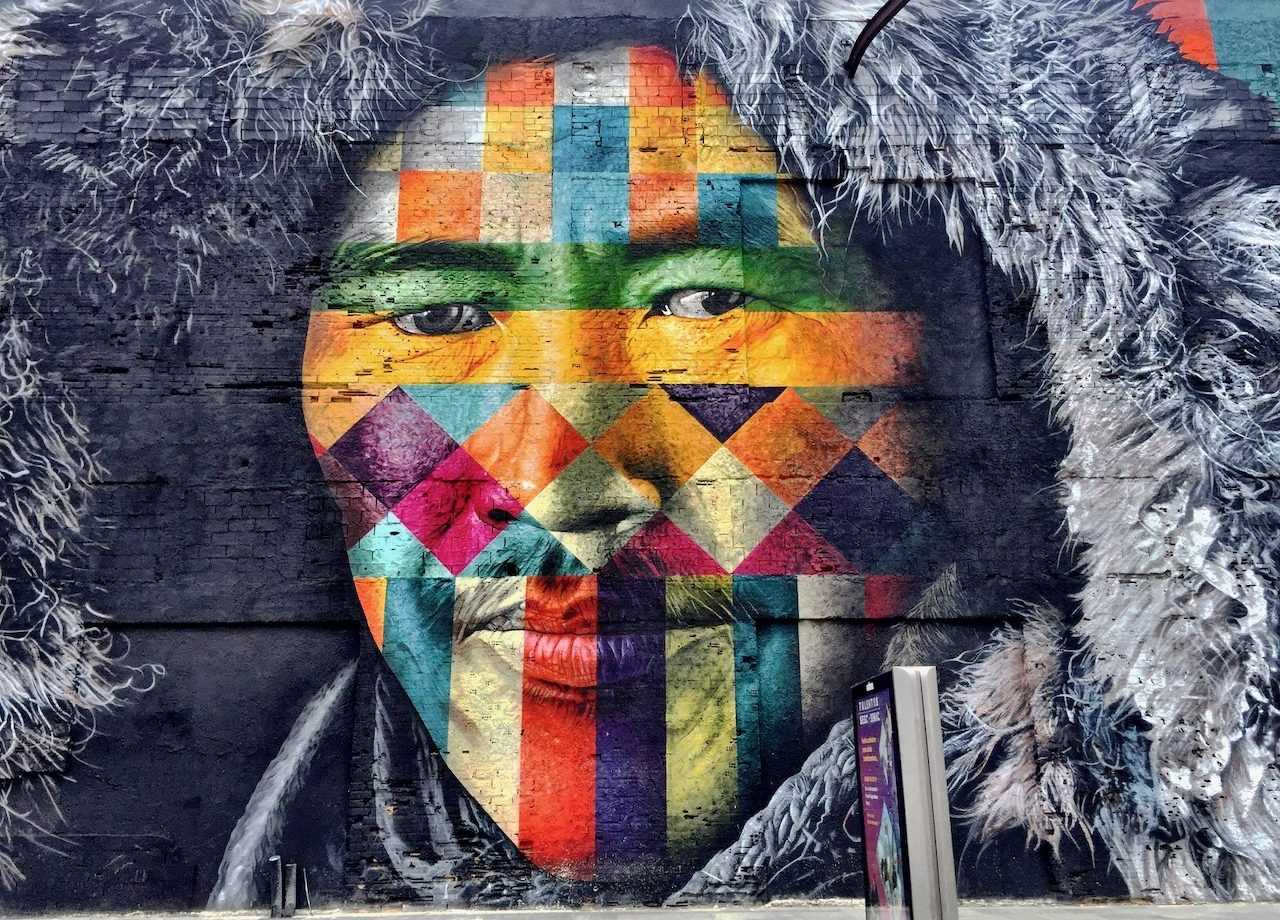
Street art is a form of self-expression that has its roots in graffiti culture but has evolved into a respected and valued art form. Artists, both established and emerging, are drawn to the streets as a canvas because of the freedom it offers. Unlike traditional art forms, street art is not confined to the walls of a gallery or the pages of a sketchbook. It is accessible to anyone and everyone who happens upon it, regardless of their background or knowledge of art.
What sets street art apart is its ability to transform public spaces, inject life into neglected areas, and ignite conversations about social and political issues. These artworks often serve as powerful visual statements, challenging the status quo and encouraging viewers to see the world from a different perspective. Whether it is a mural depicting the struggles of marginalized communities or a thought-provoking stencil advocating for environmental change, street art has the power to inspire, provoke, and bring about societal change.
Street art has become an increasingly popular and prevalent form of artistic expression in cities around the world. It is a creative and often daring way for artists to share their thoughts, opinions, and emotions with the public. Street art can take many different forms, including murals, graffiti, stencils, and installations.
One of the reasons why street art is so powerful is its ability to reach a wide audience. Unlike art displayed in galleries or museums, street art is accessible to everyone, regardless of their socio-economic background or level of art knowledge. It can be found on the sides of buildings, in alleys, and even on the pavement. This accessibility makes street art a democratic art form, as it can be enjoyed by anyone who happens to come across it.
Another characteristic of street art is its ability to provoke thought and spark conversations.
Street artists often choose to address social, political, and environmental issues through their work. By creating visually striking pieces in public spaces, they hope to draw attention and encourage dialogue about these topics. Street art has the power to challenge the status quo and provoke a response from viewers. It can make people think differently about the world around them and question their own beliefs and values.
Furthermore, street art can breathe life into urban environments.
- Street art is often temporary, as it can be removed or painted over by authorities. This transience gives it a certain energy and excitement, as new pieces are constantly being created and discovered.
- Street art can also be controversial. Some people see it as vandalism or illegal, while others see it as a legitimate form of artistic expression.
- Regardless of its controversial nature, street art has undeniably had a significant impact on the art world and has gained recognition as a valuable form of artistic expression.
The Evolution of Street Art
Street art has come a long way since its humble beginnings. What started as simple graffiti markings on walls has evolved into a respected form of artistic expression.
In the early days, street art was often seen as an act of rebellion, with artists using spray paint to create their works in public spaces. These artists had a desire to challenge the status quo and make a statement about society.
As time went on, street art began to gain recognition and appreciation from the art world. Artists started to experiment with different techniques and styles, pushing the boundaries of what was considered traditional art. They began to use stencils, stickers, and wheatpasting to create their works, adding a new layer of complexity to their art.
With the rise of social media, street art has been able to reach a wider audience than ever before. Artists can now share their work online, allowing people from around the world to see and appreciate their art. This has helped to legitimize street art as a legitimate art form and has given artists more opportunities to showcase their talents.
Today, street art is no longer confined to the streets. It can be found in galleries, museums, and even on commissioned murals. Street artists are now sought-after for their unique perspectives and the vibrancy they bring to their work.
Street art continues to evolve and change, reflecting the times and the social issues of the day. It remains a powerful form of expression that can challenge, inspire, and provoke thought. The evolution of street art has truly transformed the artistic landscape, bringing color and creativity to the world.
Urban Murals: Transforming Cities
Urban murals have become a powerful tool for transforming cities and revitalizing urban areas. These large-scale artworks not only add beauty and vibrancy to otherwise plain walls, but they also serve as a means of self-expression for both the artists and the communities they belong to.
One of the most notable aspects of urban murals is their ability to transform once neglected or forgotten spaces into vibrant cultural hubs. With their bold colors and striking designs, these artworks have the power to draw in visitors and create a sense of community and pride. In many cities, areas that were once considered unsafe or unattractive have been transformed into popular destinations, thanks to the presence of these stunning murals.
Urban murals also play a crucial role in preserving local culture and history. Many artists choose to depict scenes and motifs that are unique to the city they are working in, celebrating its heritage and identity. These murals serve as a visual narrative, telling the story of the place and the people who live there. They remind residents and visitors alike of the rich cultural tapestry that exists within the city walls.
Moreover, urban murals often address important social and political issues, shining a light on topics that are relevant to the community. From advocating for environmental awareness to raising awareness about social justice issues, these murals have the power to inspire conversations and provoke thought. They act as a form of public art that can spark dialogue and bring attention to the issues that matter.
The Impact of Urban Murals
The impact of urban murals goes beyond the aesthetic and social aspects. These artworks have been proven to have economic benefits for cities that embrace them. In many cases, urban murals attract tourists and art enthusiasts, boosting local businesses and creating new job opportunities. Furthermore, they can increase property values and encourage local investment.
Conclusion
Urban murals have the power to transform cities in profound ways. Through their beauty, cultural significance, and ability to spark conversation, these large-scale artworks breathe new life into urban spaces. They illustrate the incredible impact that art can have on community development, social change, and economic growth.
The Tools of a Street Artist

In order to create their vibrant works of art, street artists rely on a wide range of tools. These tools not only allow them to bring their ideas to life but also help them navigate the unique challenges of creating art in public spaces. Let’s take a closer look at some of the essential tools of a street artist.
Spray Paint
Spray paint is perhaps the most iconic tool used by street artists. With an array of colors and can sizes to choose from, spray paint allows artists to quickly cover large areas and create bold, eye-catching designs. It requires a steady hand and a good understanding of technique to control the flow of paint and achieve the desired effects.
Stencils

Stencils are a handy tool that street artists use to create precise and repeatable designs. By cutting out shapes or patterns on a piece of stencil material, artists can easily reproduce their designs multiple times in different locations. Stencils can be made from various materials such as cardboard or plastic and are often used in combination with spray paint.
Other tools that street artists commonly use include:
| Brushes | For smaller details and touch-ups, street artists may use brushes with various bristle types and sizes. |
| Markers | Artists may use markers for outlining or adding finer details to their work. |
| Rollers | When working on larger surfaces, street artists may use paint rollers to quickly cover a large area with paint. |
| Scaffolding | For creating murals on tall buildings or hard-to-reach areas, street artists often use scaffolding or ladders to access the desired space. |
Each street artist has their own preferred set of tools and techniques, which contribute to their unique style and creative expression. The combination of these tools, along with the artist’s skill and imagination, enables them to transform dull urban spaces into vibrant and captivating artistic landscapes.
The Process of Creating a Street Art Piece
Creating a street art piece involves a series of steps that require planning, creativity, and skill. Here is a glimpse into the process:
1. Inspiration: The first step in creating a street art piece is finding inspiration. Artists draw from various sources, such as current events, personal experiences, or cultural influences to develop their ideas.
2. Design and Preparation: Once inspired, artists sketch their ideas on paper, determining the composition, colors, and overall aesthetic. They may also research specific techniques or styles that align with their vision.
3. Location: Choosing the right location is crucial for a street art piece. Artists consider factors such as visibility, accessibility, and legality when selecting a wall or surface to showcase their artwork.
4. Materials: Artists gather their materials, including spray cans, brushes, stencils, and other tools necessary for the execution of the piece. They also ensure they have protective gear and take safety precautions.
5. Execution: With the design and materials in hand, artists begin creating their street art piece. They start by outlining the composition and then fill in the colors and details. Techniques like stenciling, freehand spraying, or wheat-pasting may be used.
6. Collaboration: Some street art pieces involve collaborations with other artists or communities. This fosters a sense of unity and helps create a larger and more impactful artwork.
7. Completion: After the art piece is finished, artists step back to evaluate their work. They make any necessary touch-ups or adjustments to ensure the final piece reflects their original vision.
8. Preservation or Ephemeral Nature: Depending on the artist’s intention, the street art piece may be left to the elements, gradually fading over time, or it may be preserved through protective coatings or other means.
Creating a street art piece is a dynamic and evolving process that allows artists to express themselves and connect with the public in a unique and powerful way.
Street Art’s Impact on the Urban Environment
Artistic Vibrancy
One of the major impacts of street art on the urban environment is its ability to inject vibrancy and creativity into otherwise mundane and sterile spaces. By transforming blank walls and empty facades into colorful and visually captivating masterpieces, street art breathes life into the cityscape, making it more appealing and aesthetically pleasing.
Moreover, the presence of street art can create a sense of pride and ownership within a community. When local artists are given the opportunity to showcase their talent and creativity, it fosters a sense of belonging and cultural identity, making residents feel connected and invested in their neighborhood.
Social Commentary
Another significant impact of street art on the urban environment is its role as a medium for social commentary. Street artists often use their work as a platform to address pressing social issues or challenge the status quo. Their art can serve as a powerful tool to spark conversations and raise awareness about topics such as inequality, politics, and environmental issues.
By placing thought-provoking images and messages in public spaces, street art allows for unfiltered and uncensored expression, reaching a wide and diverse audience. This form of artistic activism has the power to inspire and mobilize communities, encouraging them to examine their society and strive for positive change.
Controversy Surrounding Street Art
Street art has always been a subject of controversy and debate. While some consider it a powerful form of self-expression and a way to transform public spaces, others view it as vandalism and an illegal act.
One of the main reasons why street art is controversial is because it is often created without permission. Artists take to the streets, walls, and buildings, using them as their canvas without seeking authorization from the property owners or local authorities. This raises questions about property rights and the legality of the artwork.
Another point of controversy is the subject matter of street art. Some artworks can be political or provocative, challenging social norms and raising awareness about important issues. However, not everyone appreciates these messages, and some consider them offensive or inappropriate for public spaces.
Legal Issues
Street art often blurs the line between art and vandalism, leading to legal issues. In many cities, graffiti and street art are considered illegal, and those caught in the act can face fines or even jail time. Property owners also have the right to remove or paint over street art on their properties, which can be disheartening for artists who put a lot of time and effort into creating their pieces.
Public Opinion

Public opinion about street art varies. Some people see it as a valuable form of artistic expression that adds color and vibrancy to a cityscape. Others see it as an eyesore that defaces public property. The debate over whether street art should be embraced or eradicated continues to divide communities.
Overall, the controversy surrounding street art highlights the complex relationship between art, public spaces, and personal freedom. It poses important questions about the role of art in society and challenges traditional notions of where art should be created and displayed.
Celebrating and Preserving Street Art
While street art can bring vibrancy and beauty to urban environments, it is often at risk of being destroyed or overlooked. Recognizing the value of street art as a form of artistic expression and cultural heritage, efforts have been made to celebrate and preserve these works.
One way to celebrate street art is through organized events and festivals. Cities around the world host street art festivals, inviting renowned artists and local talent to create new murals and installations. These events not only provide a platform for artists to showcase their work but also engage the community in the creative process. The festivals often include live painting sessions, workshops, and guided tours, allowing people to immerse themselves in the world of street art.
Preserving street art can be a challenge, as these works are typically created on temporary surfaces such as walls, bridges, and abandoned buildings. To prevent the loss of these artworks, various initiatives have emerged. Some cities have implemented programs that protect and maintain street art, such as creating dedicated areas where artists can freely express themselves. Others have developed strategies to document and archive street art digitally, ensuring its preservation even if the physical artwork is destroyed.
Another approach to preserving street art is through the establishment of street art museums and galleries. These institutions provide a space for street artists to display their work in a controlled environment, away from the risks of vandalism and weather damage. By exhibiting street art in a museum setting, it gains legitimacy as a recognized art form and can attract a wider audience.
Furthermore, advances in technology have allowed for the creation of virtual street art experiences. Using augmented reality, people can explore and interact with digital reproductions of street art. This innovation not only enhances accessibility to street art but also offers a way to preserve and appreciate these works without the risk of damage or removal.
Celebrating and preserving street art is essential for maintaining the vibrancy and cultural significance of urban spaces. Through festivals, preservation initiatives, museums, and technological advancements, street art can continue to inspire, challenge, and beautify our cities.

I am a mural enthusiast and a fervent admirer of street art. Rather than creating murals myself, I am passionate about collecting them. My love for street art knows no bounds. I am dedicated to curating and cherishing these artworks that grace the streets. My collection stands as a testament to my profound appreciation for this form of artistic expression.
read about me



